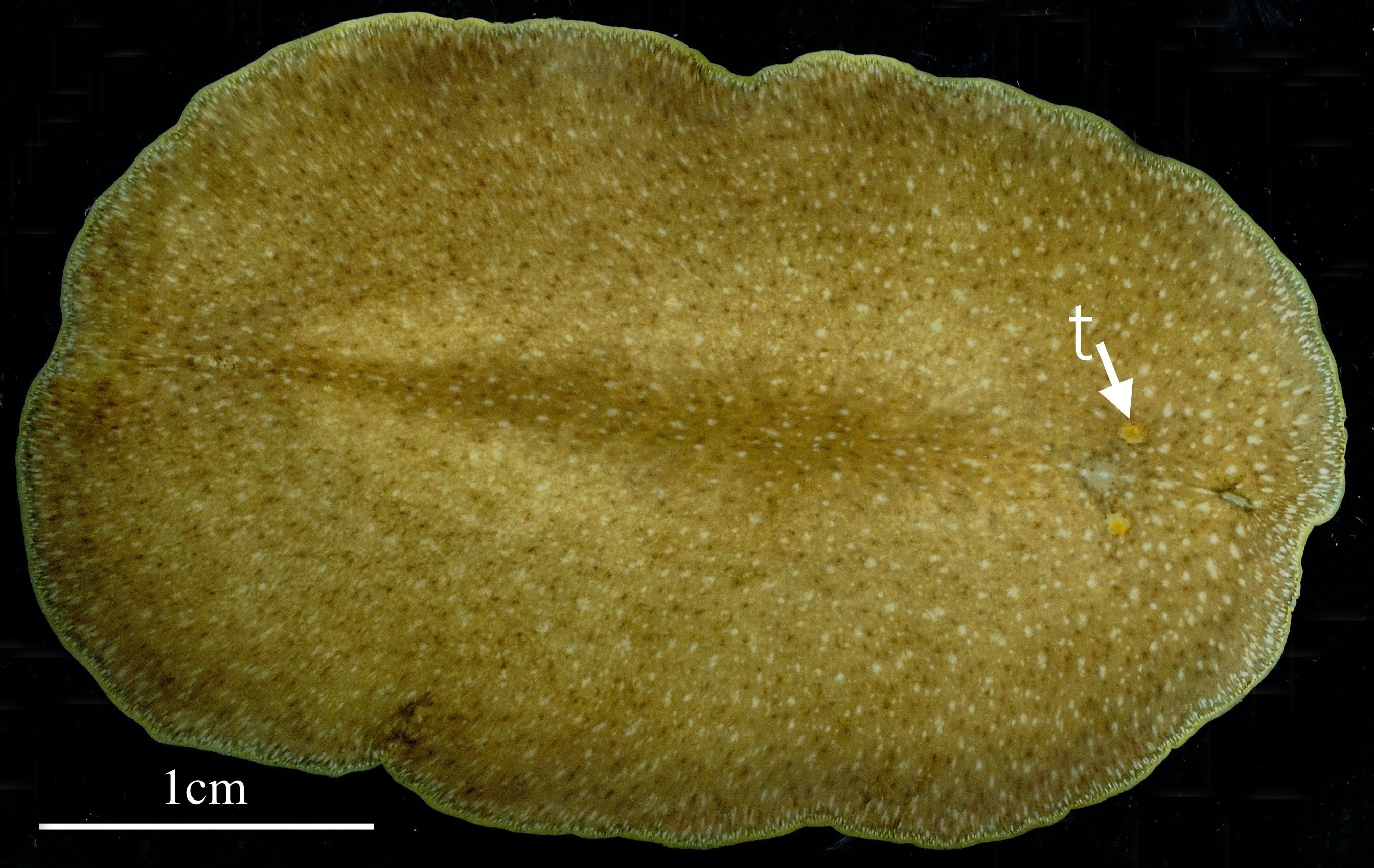Predation of Oysters Using an Autonomic
Pharynx in the Oyster Leech
We examine the predatory behavior of the polyclad flatworm
Cryptostylochus sp., or called
oyster leech. During the attack period of flatworms protruding
pharynges form fragments that we call "autonomic pharynges". Using
time-lapse photography, we find that the autonomic pharynx moves around
slowly and independently. Our results show that autonomic pharynges can
decompose the clam mantle and further prevent the oysters and clams
from closing their shells, eventually causing them to die. The
autonomic pharynges play a critical role during the predation process
of the stylochid flatworm.This external digestive function of autonomic
pharynges might be a new pattern of predation behavior and first been
found in polyclad flatworms.




Dorsal view of Cryptostylochus
sp. t, tentacles.
Read the full article, published by Zoological
Studies, here
Follow Zoological Studies on
Twitter @ZooStudies
and Facebook
